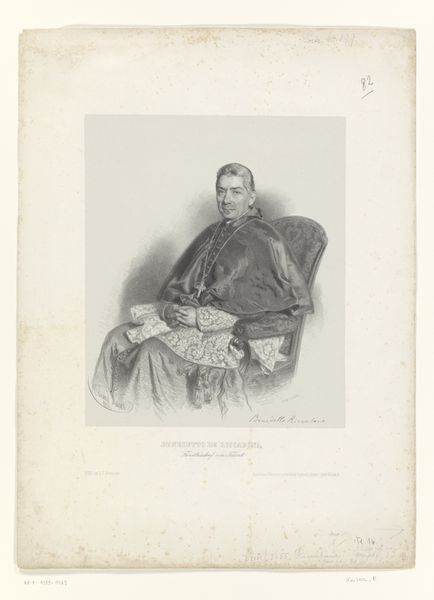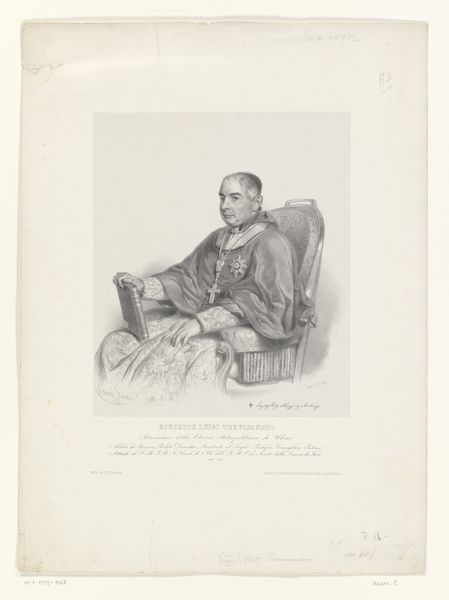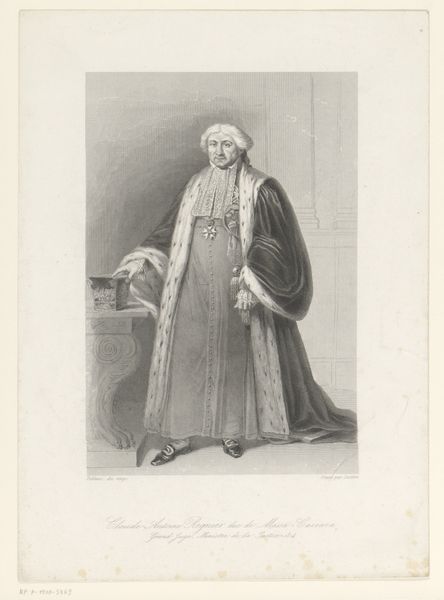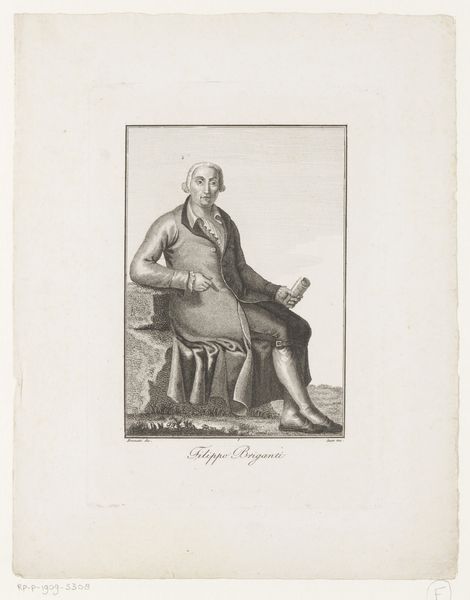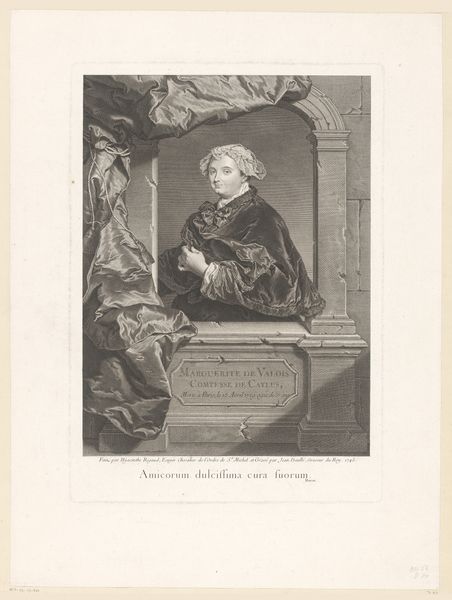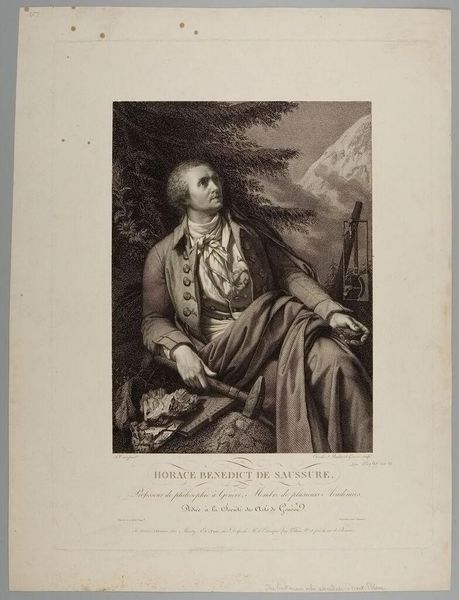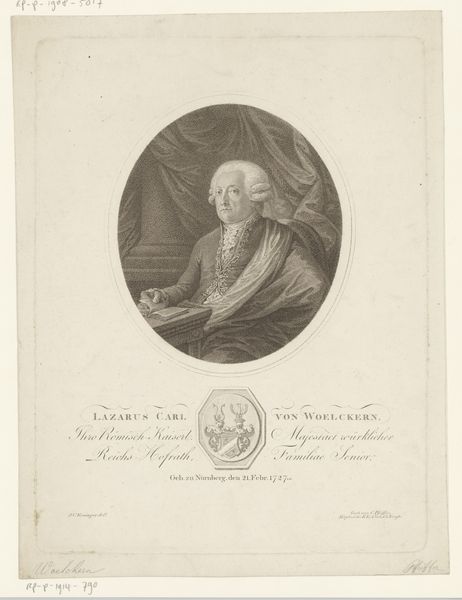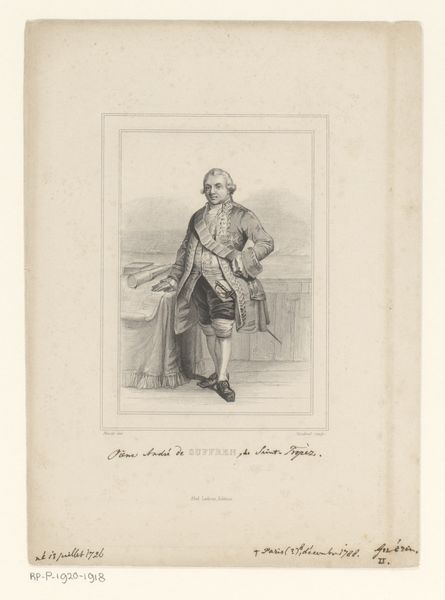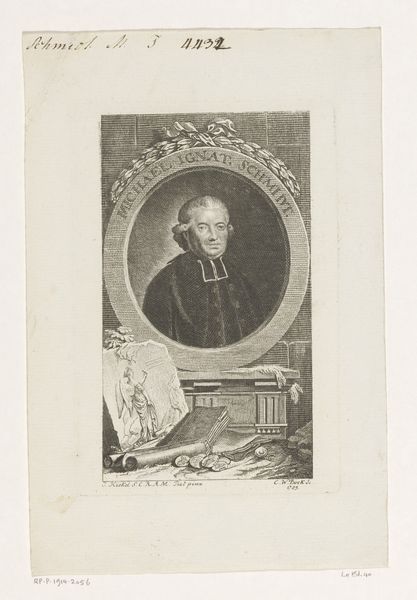
Dimensions: height 603 mm, width 443 mm
Copyright: Rijks Museum: Open Domain
Editor: Here we have a rather dignified engraving, titled "Portret van Nicolas-Alexis Ondernard," dating sometime between 1825 and 1899, by J. Van Genk. The detail achieved through the engraving process is incredible. What stands out to you in terms of how it was made? Curator: Considering the print’s materiality allows us to explore how portraiture, particularly of the clergy, was reproduced and consumed. Engravings like this one weren't about a single, precious art object. They were about multiplication, about making the image accessible to a broader public. Who do you think was this print intended for? Editor: I imagine these were distributed among members of the clergy and upper class for promotional and record-keeping purposes, perhaps? Curator: Precisely! It’s about understanding the mechanics of image dissemination. We can discuss the engraver’s skill in terms of translating texture and light using lines and the complex labor process involved, from the initial drawing to the final print run. Did the economic aspects change art production do you think? Editor: So, the rise of printmaking really democratized image-making and portraiture in particular. I hadn't considered it that way before. It brings a different meaning. Curator: Exactly. This engraving encourages us to shift our focus from the individual sitter to the system that enabled his image to circulate. It highlights the relationship between art, labor, and consumption within its specific historical moment. We should note the distinction between artistic ingenuity, artisan craft and cultural representation. Editor: Thinking about the artist and the artisan and what they are actually contributing culturally makes you consider class, society and wealth in a completely different context!
Comments
No comments
Be the first to comment and join the conversation on the ultimate creative platform.

